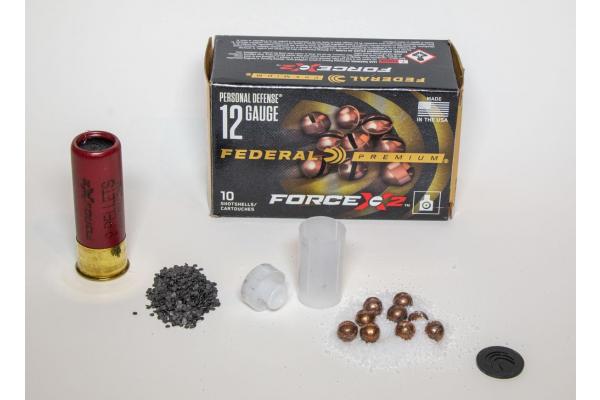How to decode the numbers and specifications on shotshell ammunition
If you are new to shotguns the ammunition can be a bit confusing because it is not the same as rimfire or centerfire ammunition.
Shotgun ammunition is categorized by gauge, and gauge is represented by the number of round balls – equal to the diameter of the bore – that can be produced from a pound of lead.
The smaller the gauge number, the larger the diameter of the shotgun’s bore. The only exception to this is the .410 shotgun, which is listed as a caliber, and is in reality a 36 gauge.
You must only use shotshell ammunition that is the same as the gauge of your shotgun.
Shotshell Length and Chamber Size
Shotgun shells are also categorized by length. The standard shotgun shell length is 2 ¾ inches, but there are also 2 ½-, 3- and 3 ½-inch shotgun shells.
If your shotgun has a 2 ¾-inch chamber it can safely fire 2 ¾- and 2 ½-inch shells. If your shotgun has a 3 ½-inch chamber, it should be able to safely fire any length shotgun shell.
Recently, the mini-shotgun shells have become popular in 12 gauge.
Mini-shot shells are only 1 ¾-inches long and should be safe to be fired in any modern 12 gauge.
However, while they may safely fire in any 12 gauge, these ultra-short shotgun shells may not reliably cycle in any 12 gauge.
Shot Size
Shot shells are also most commonly loaded with shot. Shot sizes vary greatly depending on the application.
Small shot like #7, #8, and #9 are typically used for doves and upland game. Shot sizes of #4, #5, and #6, are popular for small game like rabbits, squirrels, and turkey.
For buckshot, which can range in size from 00 to #4 Buck is often used for deer, home defense, or law enforcement applications.
Shot size, however, is consistent; #6 shot is the same size regardless of whether it is loaded in a 20 gauge, a 16-gauge, or 12 gauge shot shell.
Shotshell Payload
The size of the shot will be listed on the shotshell along with the size of the payload.
The payload is the amount of shot the shell contains. This will vary depending on the gauge and length of the shotshell.
For example, a 2 ¾-inch 12-gauge shotshell might contain 1 ¼-ounes of shot, while a 2 ¾-inch 20-gauge shotshell might contain only 1-ounce of shot.
The longer the shot shell and the larger the gauge – smaller gauge number – the more shot the shell will contain.
Understanding Shotshell Slugs
Slugs are also popular in shotguns, and they come in rifled or unrifled varieties.
Rifled slugs are near bore diameter and the rifling on the slug helps impart a spin to the slug as it exits the smooth shotgun bore.
Unrifled slugs are commonly used in shotguns that are fitted with a rifled barrel. Some are near bore diameter, but others are smaller and contained inside a sabot that separates from the slug once it exits the barrel.
Shotgun slugs are most often used for big game hunting and by law enforcement.
Specialty Shotshells
There are also some specialty shotgun shells.
These include loads that contain a mixture of different shot sizes, a combination of shot and a slug, and even buckshot that breaks apart on impact.
There are also some very unique shot shells that contain pepper spray, rubber bullets, flash-bangs, breaching charges, and even confetti.
These type shotshell loads are most common in 12 gauge, and are used almost exclusively for personal protection, military and law enforcement application, or novelty use.
Regardless and as always, the gauge and length of the shotshell determine their compatibility with the shotgun.
Shotguns are very versatile firearms because of the wide range of munitions that can be fired from them.
But, just as with any firearm, you must match the correct ammunition to the correct shotgun. Failure to do so can result in a dangerous and unsafe situation.
